Time: 10:30AM – 2:00PM
Location: Below Lake Estes
Big Thompson River 07/26/2023 Photo Album
After a fairly strenuous day on Tuesday that involved a fair amount of hiking in the heat and wet wading, I was reluctant to embark on a long journey on Wednesday. For this reason I reviewed all the stream flows on nearby Front Range streams, and I concluded that the Big Thompson River in the canyon below Lake Estes was my best bet. The flows were on the high side at 124 CFS, but the fly shop reports indicated that the fishing was decent. The high flows were actually a positive to buffer warming water temperatures from the soaring heat wave.
Starting Point
I arrived at my chosen pullout by 10:15AM, and this enabled me to be on the river fly fishing by 10:30AM after assembling my Loomis two piece five weight. The air temperature was 77 degrees, and it climbed to 86 degrees, before I ended my day at 2:00PM. I decided to wear my waders after wading wet on Tuesday, since very little hiking was involved with the road running along the river. When I was prepared, I hiked down the highway a short distance to a place that did not present no trespassing signs. I cut to the river and rigged my line with a peacock hippie stomper and size 16 light gray deer hair caddis. Within the first thirty minutes I landed five trout and witnessed numerous temporary connections. Three of the landed trout mashed the hippie stomper, and the other two nipped the caddis. Four of the five were wild browns, and one was a small rainbow trout.
After the hot fishing in the first hour, I encountered a private property and no trespassing sign, so I quickly retreated to the highway and skirted the private plot, until I was just upstream. I reentered the river just below a gorgeous deep pool, and I resumed my prospecting approach with the double dry presentation. The action slowed appreciably, and I was shutout in my pursuit of trout, before I claimed my lunch break at 11:45AM. I suspect that my first section of the river was assumed to be private and skipped by most fishermen; and, therefore, the fish were less pressured and more aggressive toward my flies. Of course, another explanation might be the time of day, and the late morning water temperature was in the prime feeding range.
Sweet Spot
After I fished the attractive hole on the upstream side of the private water, another fisherman appeared thirty yards above me. Needless to say I was not enthusiastic about his presence, so I gathered my rod and quickly circled around the intruder. In fairness to the upstream angler, he probably was not aware of my presence, until he waded into the river. I gave him fifty yards of space and cut back to the river across from where my car was parked. The well worn path to the river suggested that the easy access section received a high degree of fishing pressure, but I continued fishing nevertheless.
Near the End of the Day
I ate my lunch next to the river and observed the pool, but insects were not in abundance. An occasional yellow sally fluttered skyward, and small caddis could be disturbed from the streamside bushes and willows. My slow stint before lunch caused me to adjust my approach, and I switched to a dry/dropper, with a classic Chernobyl ant as the surface fly and a salvation nymph on the dropper. The Chernobyl accounted for a small rainbow, but the nymph was totally ignored. I pondered the lack of action and decided to go deeper and added a prince nymph. For the next thirty minutes I applied the dry/dropper methodology with intense focus, but two nymphs were treated the same as one. As this story developed some dark clouds arrived in the southwest sky, and the change in weather blocked the sun and dropped the air temperature.
Two on Caddis Below Overhanging Branch
As I continued my upstream migration, I moved beyond the pullout for the Santa Fe and reached a section, where the river divided into two branches around a long narrow island. I began on the left braid, but when I reached the midpoint, the stream above me was characterized as a wide fast moving riffle, so I crossed the island to the braid next to the highway. I declared the Chernobyl dry/dropper a failed experiment, and I reverted to a double dry with a size 14 yellow stimulator on the top and an olive size 16 deer hair caddis trailing. This combination enabled me to reach ten fish landed by the time a second storm cell arrived and chased me off the water. I had the most success with the double dry tight to the bank and at the tail of runs of moderate depth. Two decent browns smacked the caddis, as it began to swing at the tail of a smooth pool under an overhanging branch. I am sure this was a spot virtually ignored by fly fishermen prior to my arrival.
A streak of lightning and the nearly immediate sound of thunder motivated me to hustle back to the car. I arrived just ahead of the rain, and, in fact, I was forced to pull on my rain jacket as I pulled off my waders. Wednesday was a challenging day. I blasted off to a fast start with five fish landed in the first hour, but the catch rate stalled in the early afternoon, until I worked the edges with a dry/dropper. I was actually quite proud to be able to advance the fish count to double digits in spite of the lack of insects and high air temperature. The size of the fish was lacking with one brown trout perhaps stretching to twelve inches. I find myself yearning for another high elevation creek now that the daily air temperatures have climbed into the nineties and upper eighties.
Fish Landed: 10

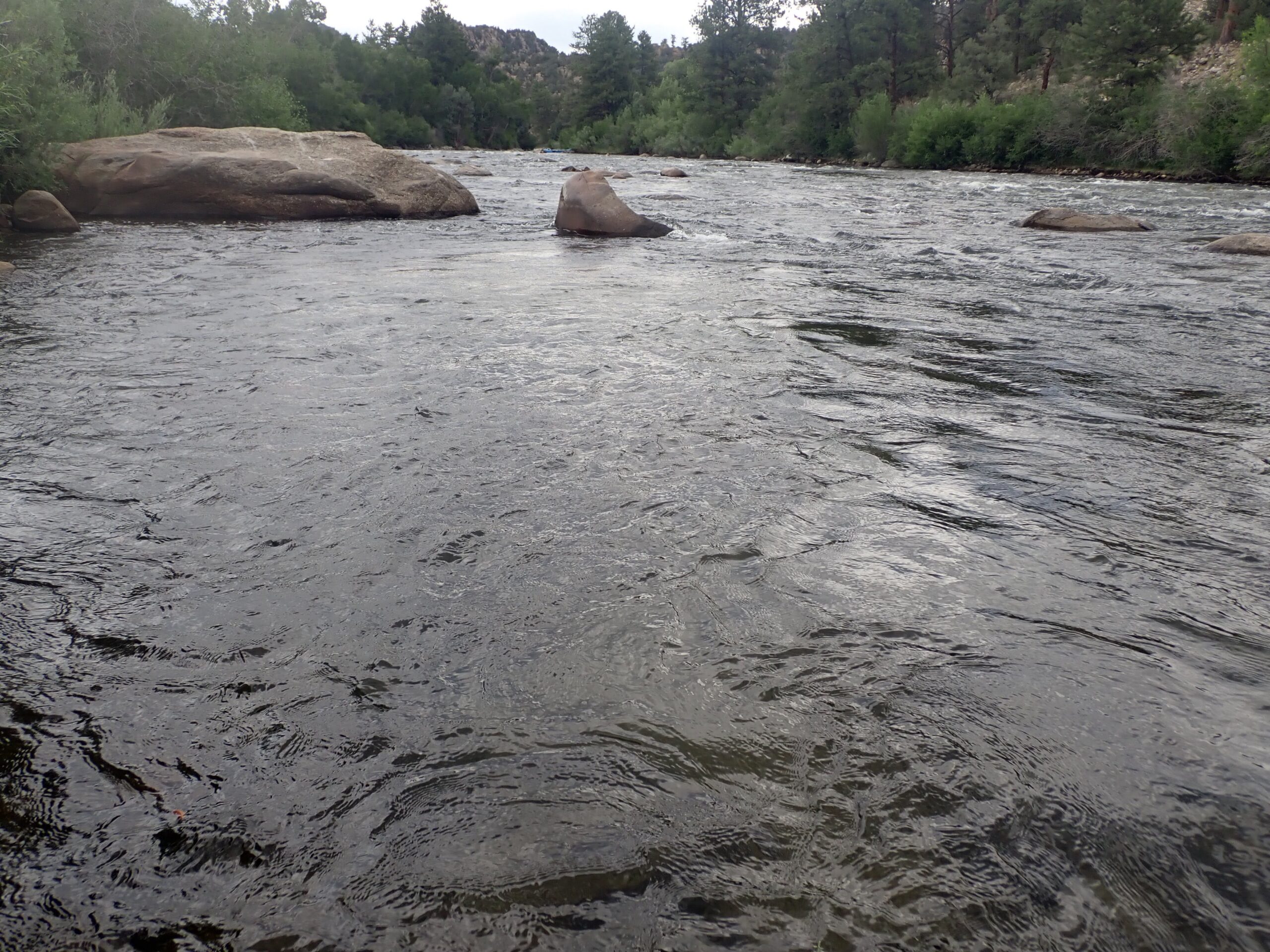 Perfect Trout Refuge During High Flows on the Arkansas River
Perfect Trout Refuge During High Flows on the Arkansas River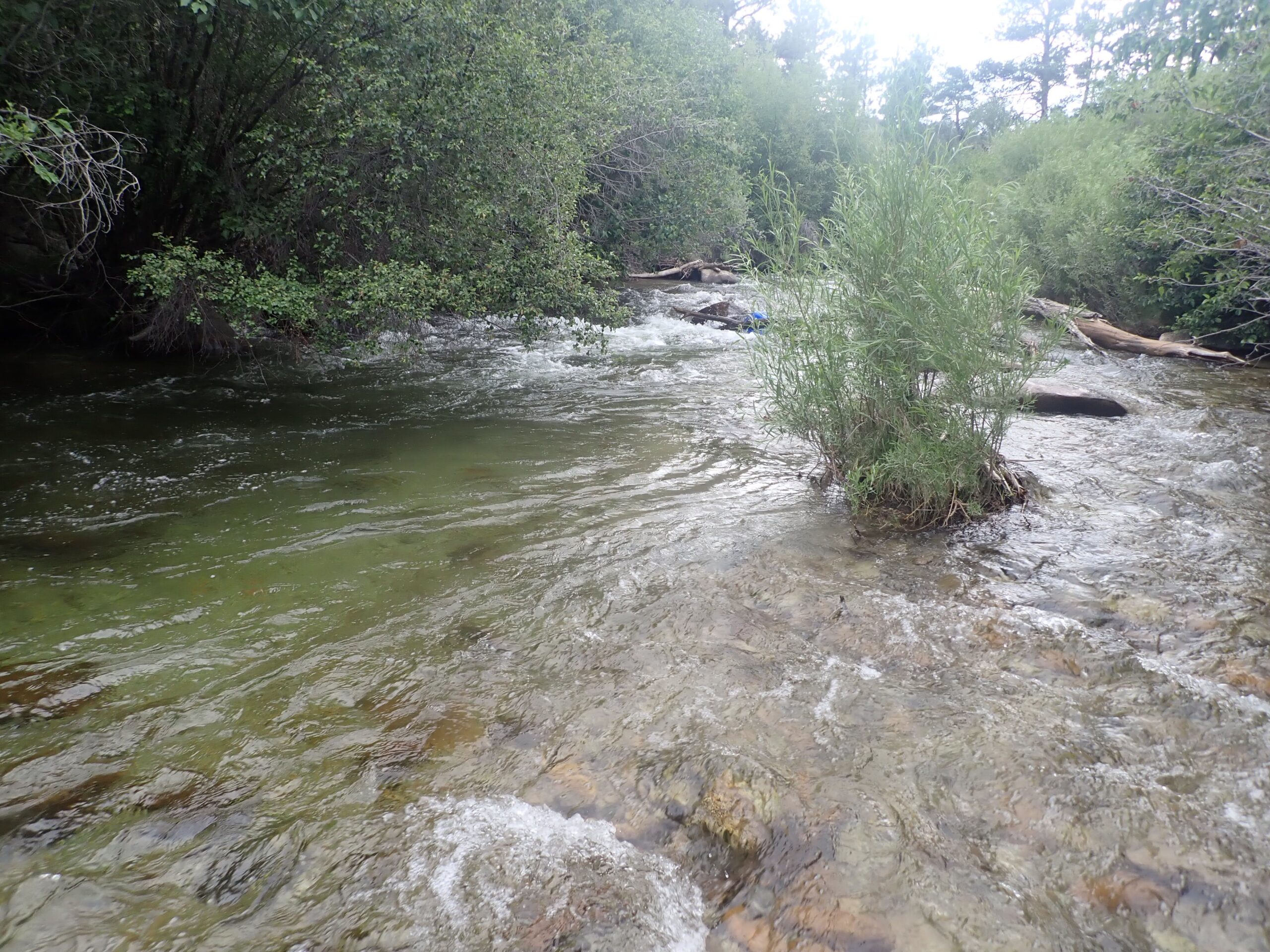 A Promising Deep Pool
A Promising Deep Pool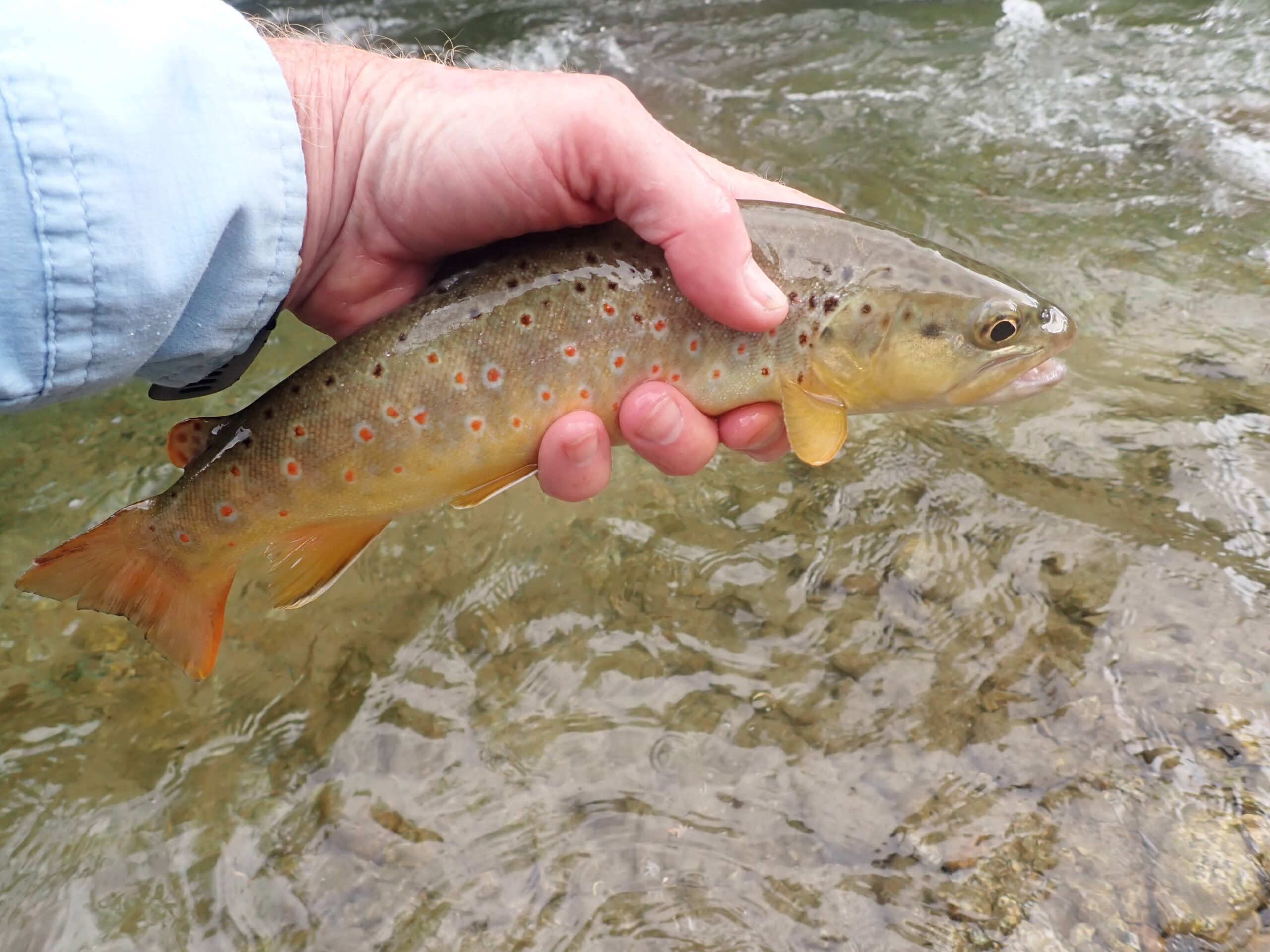 Butter Colored Brown
Butter Colored Brown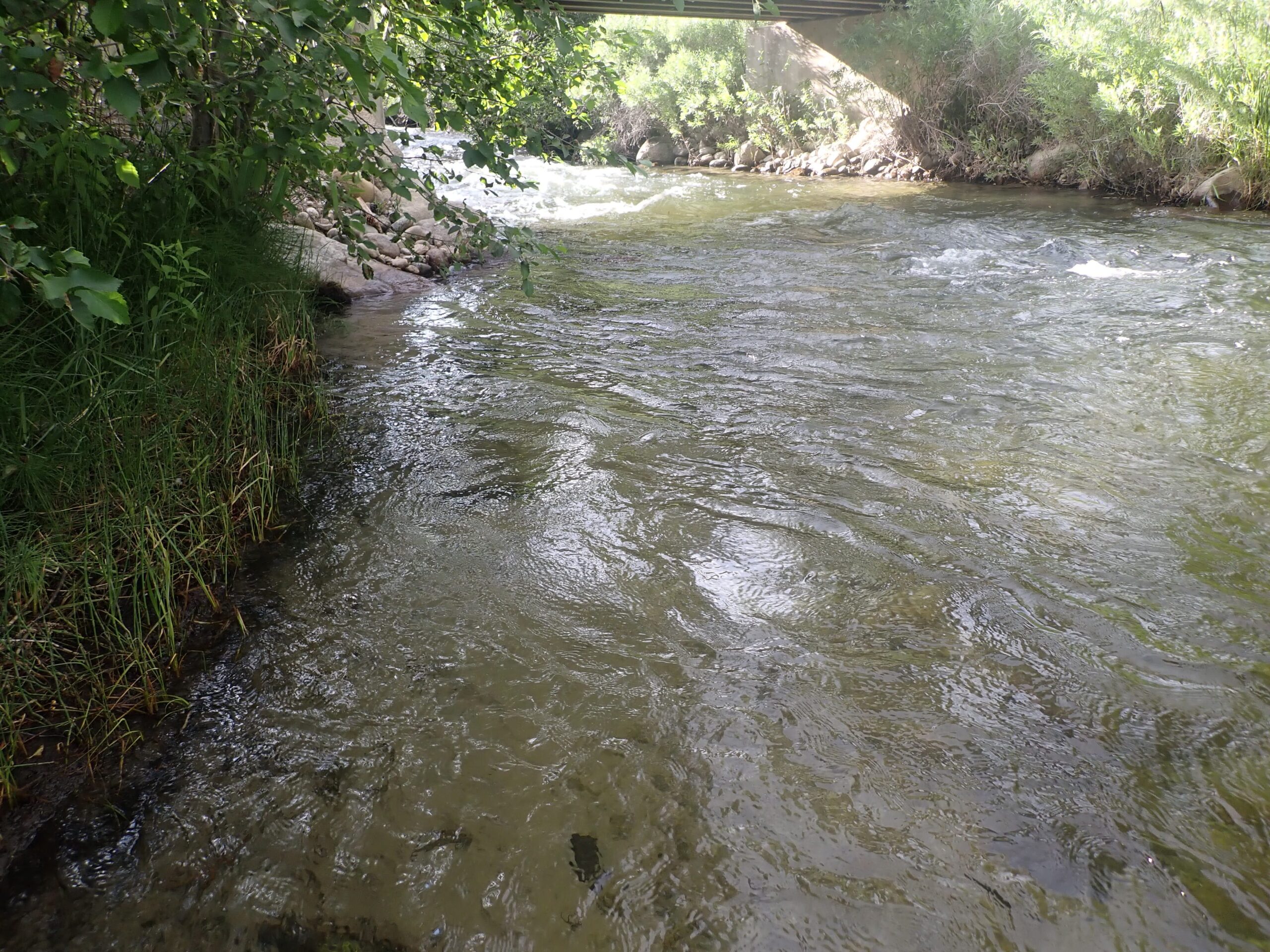 Very Productive Spot
Very Productive Spot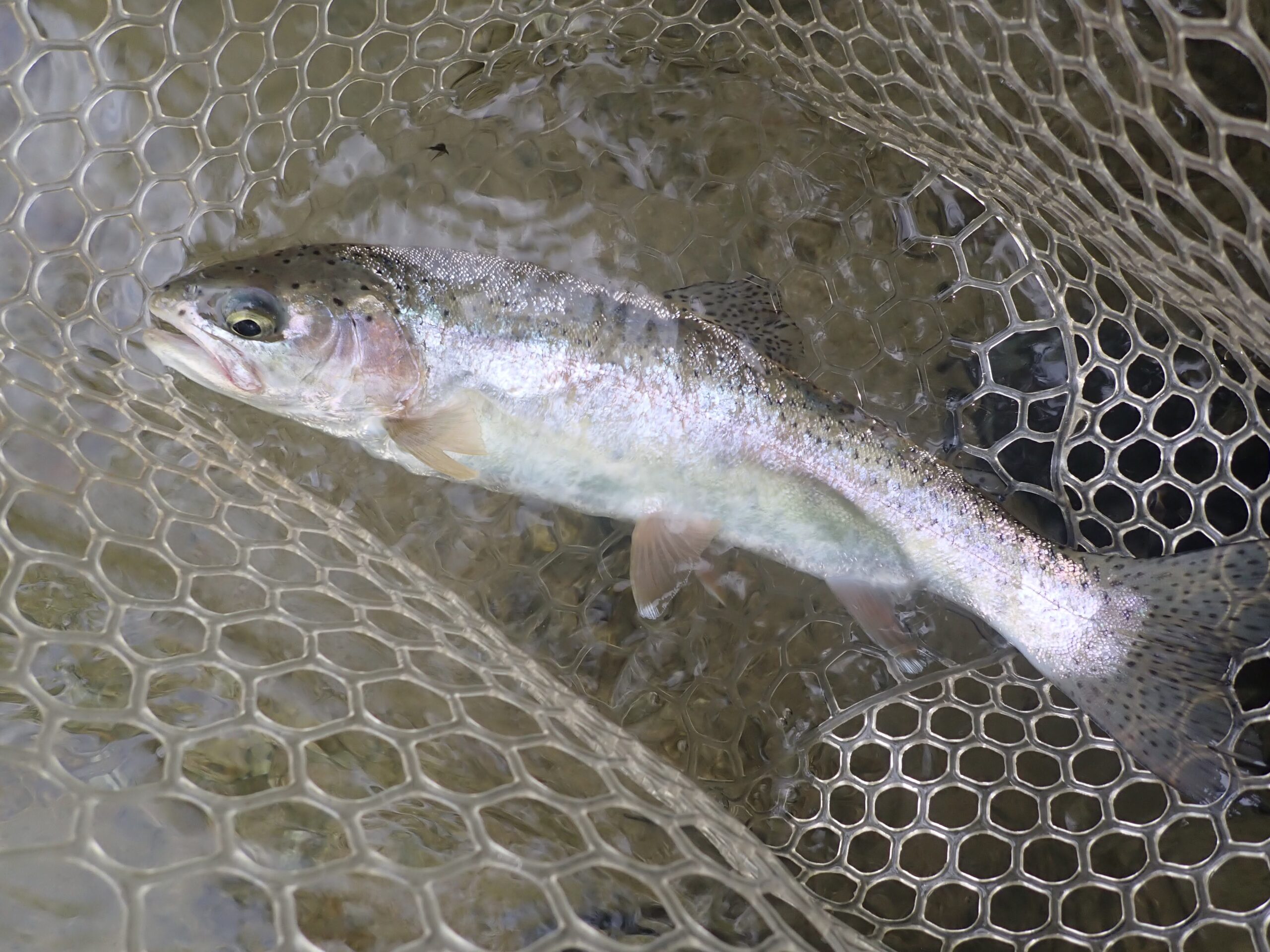 Surprise Rainbow
Surprise Rainbow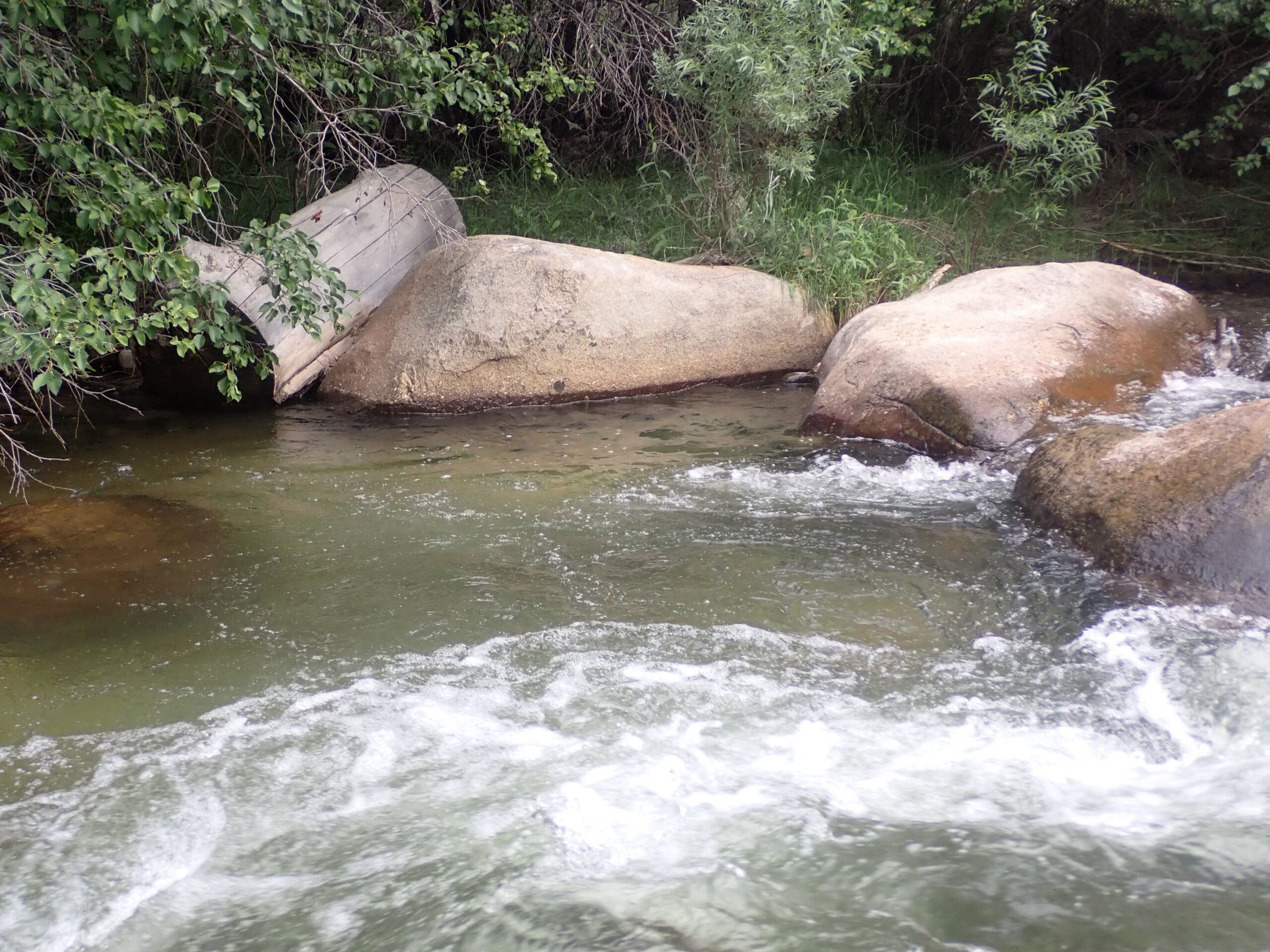 Zoomed in on Site of the Big Guy
Zoomed in on Site of the Big Guy